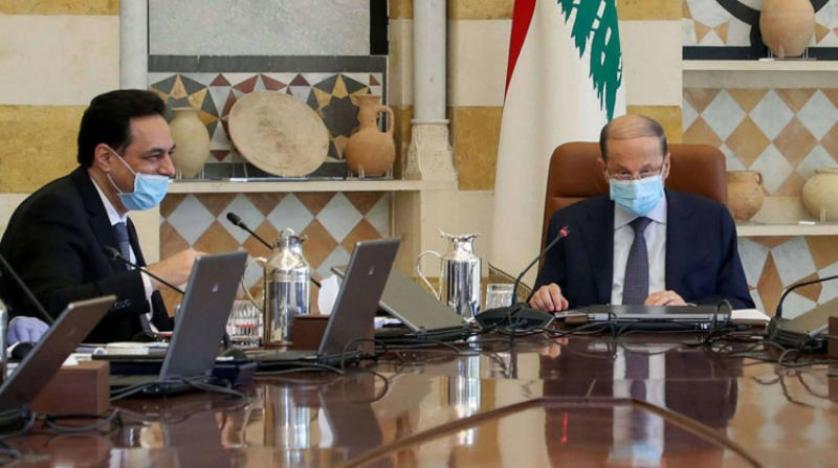BEIRUT – Lebanon plans to seek International Monetary Fund aid after approving an economic rescue plan setting out vast losses in its financial system as it aims to chart a way out of a crisis seen as the biggest risk to stability since the 1975-90 civil war.

Rooted in decades of state waste, corruption and bad governance, the crisis is causing mounting economic hardship and fuelling unrest. A protester was killed during rioting in the northern city of Tripoli this week and dozens of soldiers have been wounded in the unrest.
Lebanon will use the rescue plan here to negotiate an IMF programme, Prime Minister Hassan Diab said after it was approved by cabinet. The 53-page plan says the economy “is in free fall” and an international financial rescue package urgently needed.
“If we get (IMF support), and God willing we will, it will help us to pass through this difficult economic phase, which could be three, four or five years,” said Diab, a little-known academic until he was nominated premier in January by the Iran-backed Shi’ite group Hezbollah and its political allies, including President Michel Aoun’s party.
“The road ahead will not be easy, but our determination and optimism will help us.”
The crisis has brought economic difficulties on a scale unseen before in Lebanon, even during its civil war.
addled with one of the world’s biggest public debt burdens, the state defaulted on its sovereign debt in March for the first time. The government declared hard currency reserves had hit critically low levels and were needed for vital imports.
The local currency has shed more than half its value and savers have been largely shut out of their deposits since October, when countrywide protests erupted against ruling politicians.
Consumer goods prices in the import-dependent country have shot up by 50% since then.
The IMF is widely seen as Lebanon’s only way to secure financing. Foreign governments that have supported Lebanon in the past have said it must implement long-delayed reforms before it gets any aid this time.
Lebanon is seeking external finance support in excess of $10 billion, Diab said. That is in addition to some $11 billion of funds pledged by donors in 2018 for infrastructure projects but which were conditional on long-delayed reforms.
HUGE LOSSES
The new plan maps out tens of billions of dollars of losses in the financial system, which has helped to bankroll decades of large state budget deficits.
“We will seek to absorb losses fairly, that is without any burdens on those who have not benefited from past policies,” Diab said. The plan aims to protect depositors’ money and strengthen and restructure banks, he added.
But the government would seek a contribution from those who had benefited from extremely high interest rates and from financial engineering, he said, referring to central bank operations used to attract dollars from abroad.
Contributions would also be sought from “those who broke the laws and have stolen public funds”.
Diab said the plan would also be used to launch negotiations to restructure the sovereign debt. It would take six to nine months to be clear how much $31 billion of Eurobonds could be reduced, he said.
The plan projects losses in the financial system using an exchange rate of 3,500 pounds to the dollar, close to the current rate in a parallel market but some 57% weaker than the official peg that has been in place since 1997.
Losses at Lebanese institutions were estimated at 241 trillion Lebanese pounds, or $69.9 billion at the weaker rate.
It attributed 177 trillion pounds in losses to the central bank and 64 trillion to commercial banks.
To restore central bank strength, the plan called for the creation of a public asset management company holding key government assets, excluding oil and gas, the profits of which would fund central bank capital increases.
“Going forward, the government intends to move to a more flexible exchange rate,” the plan says. A graph indicated the pound weakening to 4,297 by 2024.
It projected output shrinking by 13.8% in 2020 and 4.4% in 2021, before a gradual recovery that would enable the economy to grow by 3.1% in 2024.
(Reuters)
Leave a Reply
You must be logged in to post a comment.